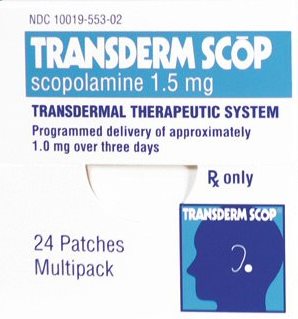Motion sickness drugs
Monday 29 September 2014
What do the drugs scopolamine and cinnarizine have in common?


Both are used to prevent motion sickness (sea-sickness) effectively. Since many of your students (and me!) are likely to suffer from motion sickness it might be useful to look at some of the chemistry behind these two drugs; particularly as they illustrate some of the chemistry that is new on the 2014 programme.
Cinnarizine is sold commercially as stugeron or stunarone and is taken orally. It needs to be taken two hours before required and is effective for up to four hours. It works by interfering with the signal transmission between the inner ear and the vomiting centre of the hypothalamus. Although commonly used to combat motion sickness it is also prescribed for people suffering from Ménière’s disease - a disorder of the inner ear which affects hearing and sense of balance. Cinnarizine has the IUPAC name (E)-1-(diphenylmethyl)-4-(3-phenylprop-2-enyl)piperazine with the following structure:

Students will not be able to identify the piperazine group but they should be able to identify the phenyl and alkenyl functional groups. E/Z isomerism is also on the new programme so it could be instructive to ask them to draw the Z isomer.
The structure of scopolamine is more interesting:

Ask students to identify as many functional groups as they can and also determine how many chiral centres the molecule possesses. The molecule contains tertiary amine, hydroxyl, phenyl, ester and ether functional groups and the carbon atom attached directly to the phenyl ring is chiral.
Scopolamine is usually administered through the skin by attaching a patch containing 1.5 mg of the drug behind the ear. It is a plant alkaloid and longer lasting than cinnarizine with the effects of the patch persisting up to three days. Like all drugs, both cinnarizine and scopolamine have associated side effects (scopolamine is a known antidepressant) but when taken in small quantities these are normally insignificant. Cinnarizine can cause drowsiness so should not be used by car drivers when using ferries or by people piloting boats or planes. In fact in a controlled study done in 2012 on 76 naval crew members it was shown that a scopolamine patch is more effective and has less adverse reactions than cinnarizine.


Comments
To post comments you need to log in. If it is your first time you will need to subscribe.